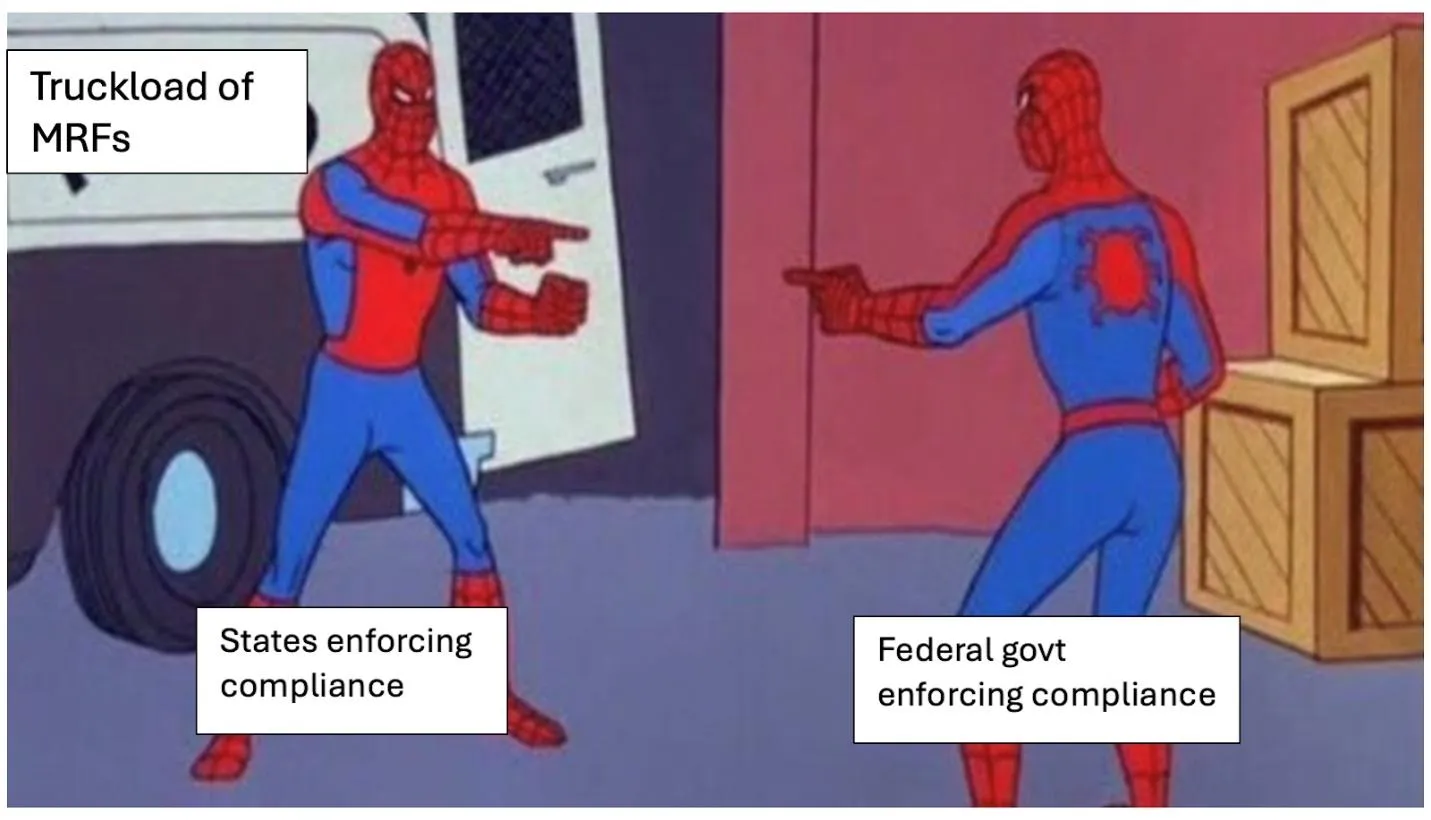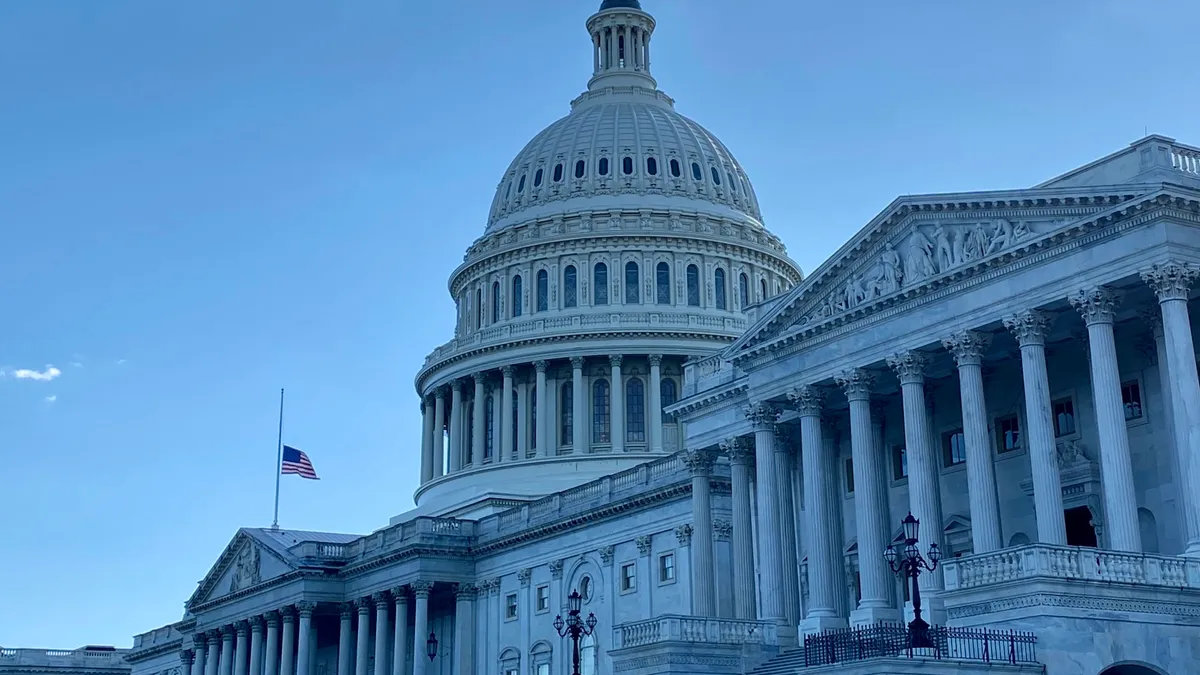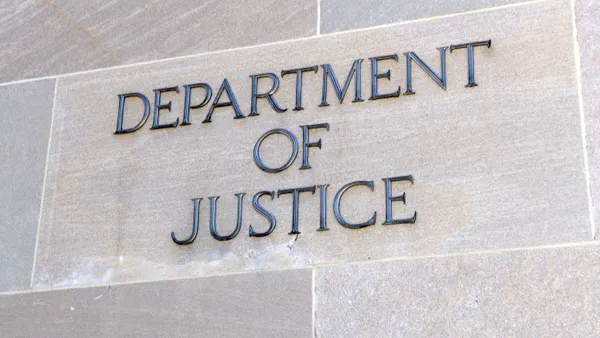Editor’s note: Carol Skenes is a principal strategist at price transparency platformTurquoise Health.
If you follow the price transparency landscape to any degree, you’ll often see articles about the quality and compliance of hospital or payer machine-readable files. It’s perhaps the most common topic related to files themselves, and everyone has a vested interest in the best data possible.
As a principal strategist at Turquoise Health, I often think about the complexity of the different enforcement mechanisms between the final rules at play. You know, just your average Wednesday evening train of thought.
The industry often reports on federal price transparency compliance endeavors, but it’s important to remember states also play a crucial role in the auditing and assessment of MRFs. Collaboration between states and the federal government is essential to keep MRF quality high.
State-specific hospital legislation
From my research, about half of all 50 states have some version of hospital price transparency legislation, including a recent Florida bill, H.B. 7089.
Many state bills contain language tied to federal requirements to post an MRF. State-level penalties for noncompliance often go beyond the federal civil monetary penalties. These bills typically include other reporting requirements similar to those found in the final rule from the CMS and many prohibit noncompliant hospitals from sending patients to collections.
Florida H.B. 7089 is an example that goes beyond a state-level copy of the federal final rule. The bill also pulls from the No Surprises Act and requires providers to create advanced explanations of benefits.
Although the Florida bill goes into effect on July 1 (a date that’s already circled on the calendar for hospitals), notably, its enforcement of AEOBs does not.
In fact, Florida will not require AEOBs until HHS, the Department of Labor, and the Department of the Treasury (the Departments) collectively issue an enforcement date for AEOBs. A critical component of the bill remains in a holding pattern awaiting further federal guidance.
Is this a new problem?
Curious if this is the first time states and the federal government have realized they were playing hot potato with price transparency compliance and enforcement?

It’s not. Let’s look at the Transparency in Coverage final rule for a minute.
While the hospital final rule is enforced by the CMS, TiC, which outlines MRF requirements for payers, is enforced by states.
But there’s real ambiguity in how TiC explains enforcement, as confirmed by the fact that no payers have received even an initial warning letter of noncompliance, that we’re aware of, since files went live on July 1, 2022. The ambiguity stems from a few different challenges.
Lack of specificity
TiC says that “states will generally be the primary enforcers” but there are no further mentions of who exactly within states owns enforcement. Constituents? A certain role? Each state’s department of insurance?
And, perhaps more fundamentally, do the states know enforcement is their responsibility?
To make things more complicated, the final rule says that HHS will assume jurisdiction over payer compliance if they determine that “a state has failed to substantially enforce the requirements.” That phrase is certainly ambiguous. What counts as substantial? What defines failure?
There is one specific and unambiguous point of fact though: As of today, no payer has received a fine or public warning of noncompliance despite the industry’s knowledge that TiC files have room for improvement. States have not enforced the requirements, any way you look at it.
Lack of defined processes
TiC says the Departments will work “closely with state regulators to design effective processes and partnerships for enforcing the final rules,” but I have not seen states or The Departments publicly share any processes or partnership details.
And, if “failure” is defined as no payer CMPs issued since the July 1, 2022 go-live date, then states have failed to enforce compliance.
What then is the likely plan of action from The Departments? Surely if there was such a plan, they’d have shared it publicly so everyone could perform quality assurance on files and the quality of data would improve.
The fact that several industry voices have called for file improvement and enforcement and we’ve not heard any responses from The Departments begs the question of whether or not a plan for auditing and enforcement exists at either the state or the federal level.
Lack of ability to locate, download, parse, and QA data
How might states begin to tackle this? Let’s hearken back to the sitcom, Parks and Recreation, and consider what it would take for Leslie Knope to assess compliance with Indiana’s negotiated rates within TiC files. Not just the city of Pawnee, but the whole state. To do so, Leslie’s team would need:
- Knowledge that payer MRFs went live on 7/1/22, and TiC assigned compliance and enforcement to Indiana
- Strong understanding of payer/provider contracts and negotiated rates
- A comprehensive list of every in-network payer for every hospital and non-hospital entity in Indiana
- Additional computing memory and storage
- Engineers and analysts to parse the data and drill down to Indiana rates
- Ability to confirm if the reported rates are correct
- A process to notify and, eventually, fine a payer for noncompliance
Granted, Leslie wasn’t the director of state insurance and she worked locally for Pawnee. Regardless, the list above is a tall order for anyone working with a finite budget and resources, both of which are common in state government.
Enforcement and quality assurance
Back to the hospital files: when CMS began issuing CMPs against hospitals, the industry took notice and temporarily shaped up. Note the jump in MRFs between Q2 and Q3 2023:
But today, hospitals are in a similar boat as payers: no CMPs have been issued since September 2023. That means hospitals acting in good faith assume their MRFs are compliant unless they hear otherwise from CMS.
For those not acting in good faith, intentionally making files difficult (i.e., knowingly bloating the file size, uploading incomplete files, not updating files per the required timeline, or burying the files on a website), what’s the rush to improve without accountability?
There are public ways to monitor file location, size, and accuracy for both hospitals and payers. But seeing is believing, and until hospitals and payers see a warning letter in the mail or see their names on a public site deeming them noncompliant, they may not be motivated to act on file improvement. This is a huge sticking point for both hospital and payer files.
When it comes to enforcement, states can only do so much. As we see in the Florida bill’s timeline for enforcement of AEOBs, the state bill includes requirements from the NSA alongside requirements from the hospital final rule, so enforcement comes back to the federal government.
Ultimately, the buck stops with The Departments.
Enforcement is a cornerstone of the price-transparent future
As we move to a world where both hospital and payer MRFs use standard schemas, more third-party innovators will download, parse, and analyze file completeness and compliance. But the only parties with legal power to assess and enforce compliance are the states and the federal government.
All of this ties back to a common refrain: the notion of price transparency is a noble one, and yet the rules and laws built to usher our country into a more transparent future have not yet fully accomplished their goals.
The publication of MRFs solved one major problem by publicizing previously hidden negotiated rates between providers and payers.
However, it opened the floodgates on other technical and process-oriented challenges tied to how innovators can utilize MRF data to create clarity surrounding the cost of care. Although advocates and others in the industry are trying to tackle these problems head-on, compliant data will certainly shorten the time frame necessary to move us into the world of accurate pricing.




















